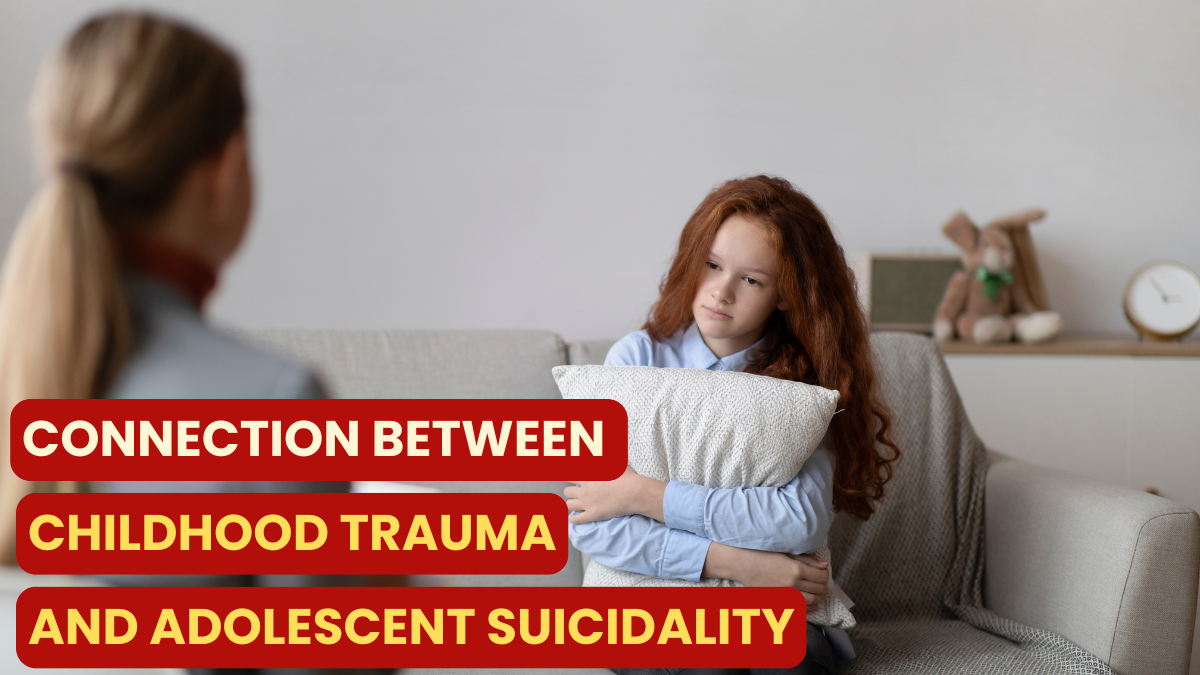What’s the Connection Between Childhood Trauma and Adolescent Suicidality?

This week, I dove deep into some recent research while updating my “Healing Trauma Using Play Therapy” training, and I came across a study I had to share with you all. It explores the connection between childhood trauma and adolescent suicidality—but here’s what makes it stand out: it’s grounded in neuroscience, specifically looking at cortisol and immune cell glucocorticoid levels.
If you’re anything like me and love blending research with practice using a neuroscience and attachment lens, this is one of those “ah-ha” articles that validates what we see in the playroom every day—and gives us more tools to do something about it.
Trauma’s Long Shadow: What the Research Shows
The study I read (citations below) compared two groups of teens—those with childhood trauma histories admitted to crisis stabilization programs due to suicidality, and a control group with no trauma or mental health history. The researchers measured cortisol and immune cell markers, essentially checking in on the body’s stress regulation system.
Here’s what they found:
-
Adolescents with trauma histories had lower resting salivary cortisol levels in the morning.
-
This suggests their stress-response system is blunted—not because they’re calm, but because their nervous systems have been chronically activated.
-
Their neurobiology is saying, “I’m on high alert all the time,” even if the threat isn’t present.
That alone is powerful, right? But what it also tells us is that kids with this type of chronic stress sensitization are walking into our offices with a narrower window of tolerance. They struggle more with emotional regulation, feel overwhelmed easily, and may even misinterpret neutral situations as dangerous.
What Does This Mean for Us as Play Therapists?
We know that play therapy impacts the brain. It's one of the few approaches that works at the implicit, sensory level—exactly where trauma lives. We can help “reset” some of those stress-response systems before they solidify into long-term issues like depression or suicidality.
But it has to start with safety. No amount of expressive arts, sand tray, or movement is going to work if the child doesn’t feel safe in the playroom. That’s why last week’s episode was all about creating that safe therapeutic space (if you missed it, go check it out!).
Once safety is established, then the therapeutic powers of play can do their thing. Play becomes the path to healing because it:
-
Works through implicit, sensory memory (not just “talk it out” methods).
-
Builds co-regulation through the therapist-child relationship.
-
Allows emotional expression and resolution in a developmentally appropriate way.
A Framework Helps You Stay Grounded (and Confident)
Here’s the deal: when we’re working with trauma, especially in kids, you need a framework. Without one, it’s easy to get stuck in the “what activity should I do today?” spiral. Trust me, I’ve been there. That panic of trying to pull the perfect intervention out of thin air while second-guessing whether you’re even helping.
But with a strong case conceptualization (aka your working hypothesis) and a theoretical model to guide you, your sessions have more direction. You can:
-
Know what stage of change the child is in.
-
Choose activities based on why they work, not just because they’re fun.
-
Feel more confident when things get hard (because they will).
And here’s the other benefit—when things start to feel messy, you can zoom out, revisit your formulation, and get back on track. No more feeling lost in the session.
Blending Neuroscience + Attachment = A Powerful Play Therapy Lens
When I’m working with trauma in older kids (usually around 9+), I move from child-centered play therapy to a more integrated model. I still carry the spirit of child-centered work—trust, following the child’s lead—but I also weave in a trauma model that helps process those body-stored sensory experiences.
It’s about using:
-
Polyvagal theory to understand threat responses.
-
Attachment theory to strengthen the therapeutic relationship.
-
Interpersonal neurobiology to map how emotion, cognition, and body experience interact.
-
Trauma-specific models that guide what to do in each phase of healing.
The research just confirms what we’re already seeing in the playroom: kids who’ve experienced trauma are carrying a heavy load neurologically. And our job isn’t just to help them express their feelings—it’s to help them regulate, reprocess, and reconnect with themselves and their world in a safe, playful space.
Want to learn more?
If this got your brain buzzing, I have a full-day training coming up that dives even deeper:
Healing Trauma Using Play Therapy: A Neuroscience and Attachment Approach
🗓 May 17th
📍 Attend in person (Southern Utah) or virtually
🎁 Early Bird ends April 30th
✨ BONUS: Get 2 free months inside the Play Therapy Elevation Circle, my new membership community for play therapists.
We’ll cover:
-
Neuroscience-based case conceptualization
-
How trauma shows up in play (themes + behaviors)
-
What to do at each stage of healing
-
Real-life activity ideas (and where they fit in the process)
-
Strategies for working with parents
🖱 You can register at rhplaytherapytraining.com
Let’s keep doing this important work—because the earlier we can help kids heal from trauma, the better chance they have at a healthy, connected future.
Citation for Research Articles:
Goltser-Dubner, T., Benarroch, F., Lavon, M., Amer, R., Canetti, Giesser, R., Kianski, E., Martin, J., Pevzner, D., Weinberg, B., Ben-Ari, A., Bar-Nitsan, M., Alon, S., Yshai, S., Lotan, J., GAlili-Weisstub, Segman, R., and Shalev, A. (2025). Childhood trauma cortisol and immune cell glucocorticoid transcript levels are associated with increased risk for suicidality in adolescence. Molecular Psychiatry, published online February 24, 2025. www.nature.com/mp
Buena, I. M., Szentagotai-Tatar, A., and Mui, A. C. (2017). Early-life adversity and cortisol response to social stress: A meta-analysis. Translational Psychiatry, 20177:1274. doi.10.1038/s41398-017-0032-3
Categories: : Case Conceptualization, Neuroscience of attachment, Play Therapy Model, Podcast, Trauma
 Cathi Spooner
Cathi Spooner 
